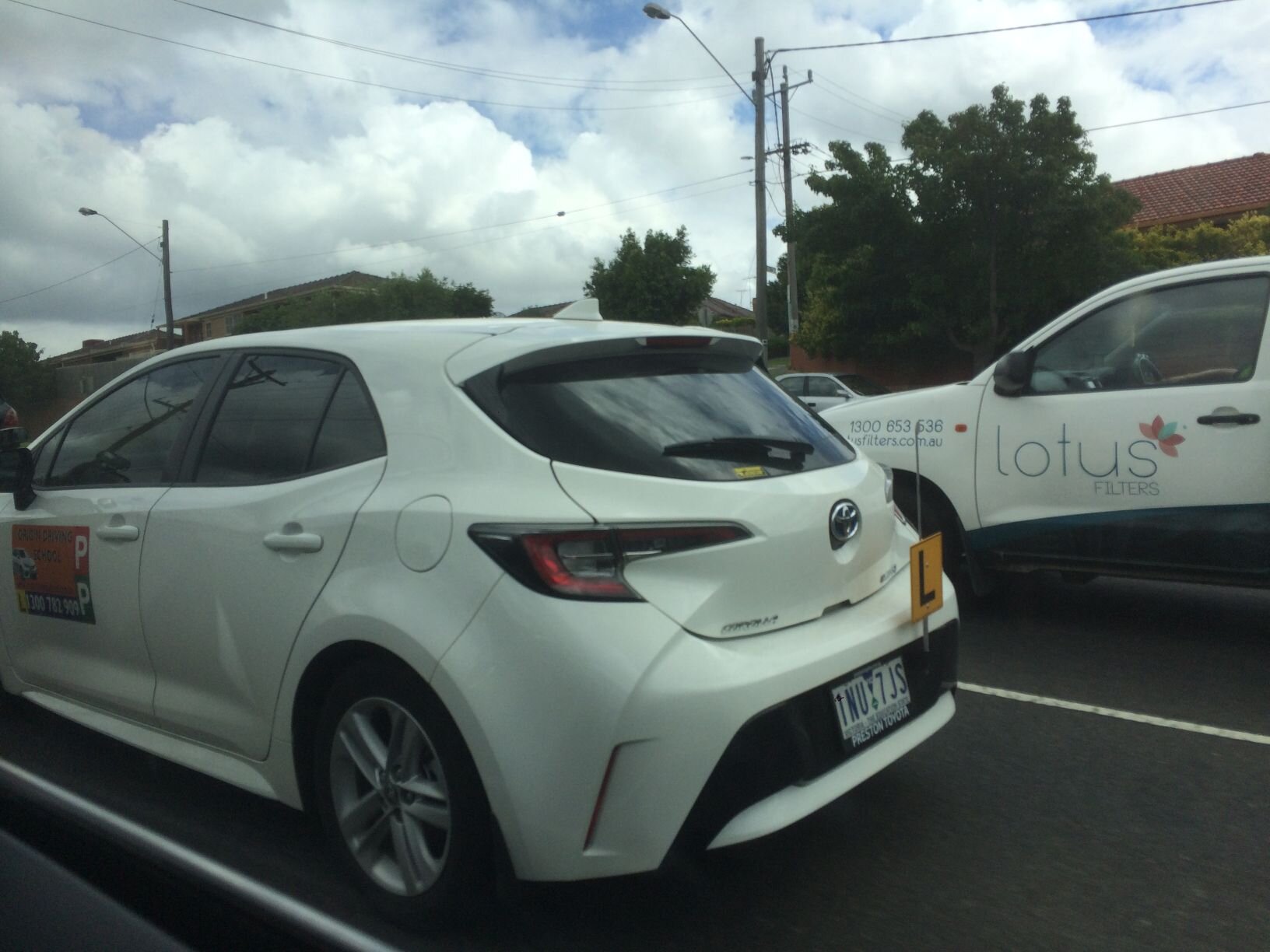Three easy steps to safe driving: like a fighter pilot
Main image: Haberdash Photography
The majority of Australian drivers hit the road as if they’re kicking back on the couch to watch the footy, or have an afternoon nap.
But doing so is dangerous, and yet it’s so easy to drive like a total Top Gun fighter pilot. Without the Tom Cruise bit. Or an ejector seat.
In fact, you might say driving a car for this reason is immeasurably more life threatening, because you don’t have an ejector seat when it goes wrong. You’re stuck there, strapped in. So even moreso, why wouldn’t you drive like a fighter pilot? Your life’s depending on it.
When I say fighter pilot, that’s not swerving erratically or changing lanes endlessly, narrowly missing the cars and objects – definitely not. I mean driving like a professional, like a Jedi, someone who is at the top of their game.
STEP ONE: VISION
Lift your vision, by raising your seat slightly, and looking as far up the road as you can possibly see.
It sounds insultingly easy, but while everybody around you is grinding their teeth flat by fixing their vision on the taillights of the car in front (including yours), if you’re watching what’s happening 20 seconds or half a kilometer up the road, you are infinitely better prepared than they are.
Your eyes dictate what your hands and feet do with the vehicle you’re in control of. If you can see the red lights up ahead, while the goose in front is visually drilling the shit out of the preceding vehicle’s rear window, there’s a Hitchcock voyeur situation going on, and you’re in the elevated position, like a sniper.
Raising your vision includes door mirrors. Stop positioning them to see the car down the inside. End this practice immediately. The car is not going to jump out or start overtaking you. Turn those useful tools outward until you cannot see the car: do it now, I’ll wait…
Have you done it yet?
Okay, good, now we can move on to how they work. A car behind enters your rearview mirror, it exits on the left or right side, then enters that respective side of your door mirror, and as it leaves your door mirror, without moving your head, it will then enter your peripheral vision and at that moment your brain instantly knows it’s there. Not a moment went by that you didn’t know spatially where that car was. Brilliant, eh?
STEP TWO: PLAN
Every moment behind the wheel you are personally responsible for your actions (or inactions) on the road network.
It’s your job to mitigate crashes – not accidents – at all times.
There is not such thing as an “accident” out on the road; that’s a bullshit term used by people ignorant of how the world works. There’s only cause and an effect.
It does not matter “who’s at fault”, and it does not matter a bee’s dick how close you were from having a crash or the other person was from punting you or someone else. You must avoid crashes, near misses and dangerous or negligent driving at all times.
Even if you’re not technically at fault, you can still be found negligent and charged.
So drive like the Terminator scans for John Connor or like a fighter pilot’s radar pings for threats.
Scan, scan, scan. Plan, plan, plan.
If someone pulls out in front, what are you going to do?
If the truck behind gets too close on the freeway, what are you going to do to stay safe if its brakes fail or that load becomes unstable?
What happens if that tradie loses his tool trailer entering the highway?
Do you have enough braking distance or room to swerve if a tree drops a limb or the mower bounces out of that ute up ahead?
Should you change lanes early to exit this road rather than trying to get ahead of slower traffic?
Where will you position the vehicle if the slow bus full of kids skids into the embankment on the twisty mountain road?
If there’s black ice on the next corner, have you wiped off enough speed to keep control?
And so on…
Every second you’re in control of that car, you need to be mentally prepared to take a course of action that lowers the risk – or avoids entirely – the likelihood of making a dangerous situation worse.
It is not your responsibility to enforce the speed limit on the tailgater on your six in his big, black pickup (or whatever the vehicle or person looks like). That’s not your role. If you’re being approached on the freeway in the right-hand lane, get out of the way, reduce the danger, be smart, de-escalate the situation.
Defuse the bomb, don’t light the bloody fuse. Reduce your speed, change lanes, have a plan, strategise for all the potential dangers that could threaten you, your kids in the back, or those in the traffic around you.
And lastly, keep your hands at 9 and 3 on the steering wheel. It’s the supreme position to have immediate and total control over the vehicle in an emergency situation. No more 10 and 2. No gangster wrist-at-12 or four fingers of each hand at 7 and 5 on the steering wheel. 9 and 3 at all times; its comfortable and you should do it with your hands slightly below level with your heart, to reduce the effort your heart needs to make pushing your blood up. This reduces fatigue, especially in long distance driving. So, 9 and 3, forever more.
STEP THREE: ACT.
If that situation you’ve been preparing for does eventuate, now is the moment.
Do not hesitate, do not guess. Act!
Most situations can be solved with the simplest of actions: brake. And don’t do it half arsed. Brake hard.
Push the brake pedal as hard as you possibly can. Ram that pedal into the firewall. Like you’re crushing a dog food can.
You cannot brake the pedal or the car. It’s engineered to take everything you can give it and more.
If you can steer into a clearer, safer path, do that. That’s why we do 9 and 3, so you can instinctively dart the car left or right if you need to dodge that erratic disconnected trailer, mower, kid, whatever.
Congratulations, you’ve done it. You’ve just turned yourself from motoring muppet into an aware, calculating pilot.
There is no luck, only the prepared.
Toyota RAV4 GXL Hybrid provided courtesy of Toyota Australia
Is there anything you want to know about the RAV4, or even about safe driving advice? Send me an email, ask me anything - I’d be glad to help.









